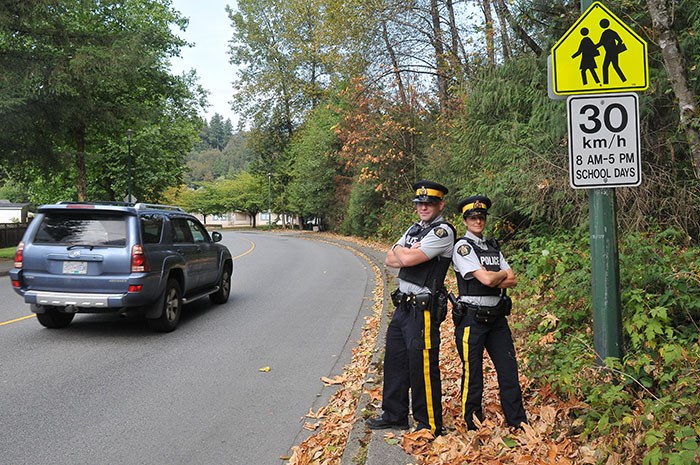After a couple months of breezy summer driving, with minimal traffic and (mostly) good weather, next week will come as a shock to many motorists.
But the Port Moody Police and Coquitlam RCMP want to remind commuters, students and frenzied parents to allow plenty of extra travel time over the coming days and to be on the lookout for pint-sized pedestrians.
"Slow down and be a bit more observant," Coquitlam RCMP Const. Jen Goodings told The Tri-City News. "Look out for kids — they'll be excited and probably crossing the road in less safe zones."
And for all those busy parents rushing to drop off little ones before getting to work, Goodings advises giving the family more time than you think you need so that you're not tempted to park illegally, which is "putting everyone at risk."
"Just go a block away and find a safer spot," Goodings said. "Take a few extra minutes in the morning, park further away and walk your child in."
Port Moody Police will be out next week enforcing traffic laws and safety in school zones.
"Back to school is a time that the Port Moody Police Department patrol officers routinely focus on school zones to protect children from motorists who have gotten used to summer driving and who disregard school zones," Const. Angela Fisher said in an email. "We are all sharing the roads with children next week who will be walking or riding bicycles to school."
They're asking motorists to allow extra commuting time come Tuesday to compensate for extra traffic and to be vigilant in and around school zones.
Police are also asking drivers to brush up on the following tips:
• Slow down. The posted speed limit in school zones is 30 km/h between 8 a.m. and 5 p.m. and 30 km/h from dusk to dawn all year round at playgrounds. It takes a vehicle 13 m to come to a complete stop when driving at 30 km/h but 27 m — more than double that distance — when driving at 50 km/h.
• Keep a lookout for the unexpected. Watch for children walking on medians, roadways and curbs, be cautious when approaching intersections and be alert for children running late, who may dart into the street without looking for traffic.
• When backing out of a driveway or garage, be vigilant and watch for children walking or cycling to school.
• Stopped for a reason. Think twice before darting in front of a stopped car — the driver may be yielding for a pedestrian.
• Drop it and drive. Do not operate a mobile device when driving. It is illegal for drivers to hold, operate, communicate or watch the screen of a hand-held electronic communication device, including sending or receiving text messages or electronic e-mail.
And if you're commuting by foot or bike:
• Use crosswalks whenever possible. When walking or cycling with your kids to and from school, choose a route that has the least amount of street crossings, and where possible, choose intersections with a pedestrian crossing light or a marked crosswalk.
• See eye to eye. Always look left and right and then left again before crossing a street, and make eye contact with drivers so you know they’ve seen you.
• Don’t text and walk. Stay unplugged and leave gadgets in backpacks when walking or cycling to and from school so you can focus on the road and see, hear and respond safely.
• Be seen. When walking and biking, wear high visibility clothing.
• Talk to the hand. Use hand signals when riding a bike and always wear a properly fitted CSA approved bike helmet when riding.
Police also have safety tips for parents of young children:
• What’s my address? Make sure younger children know at least one parent’s phone number and their home address.
• Password please. Create a secret password with your child and tell them not to go in a car or with someone who doesn’t know the password.
• Check-in. If you’re not home when your child gets back from school, have you them check in with you.
• Safety in numbers. If you’re not walking your child to school, find a friend for them to walk with.
DID YOU KNOW...
According to Coquitlam RCMP…
• The most pedestrian traffic injuries happen to five- to nine-year-olds crossing in the middle of a block, and to 10- to 14-year-olds at intersections.
• The chances of a pedestrian child surviving being hit by a car going 30 km/h is 90% but that drops down to 20% if the vehicle is going 50 km/h.
• Until children are about eight years old, it is difficult for them to assess whether a vehicle is moving or not.
[email protected]
@spayneTC



